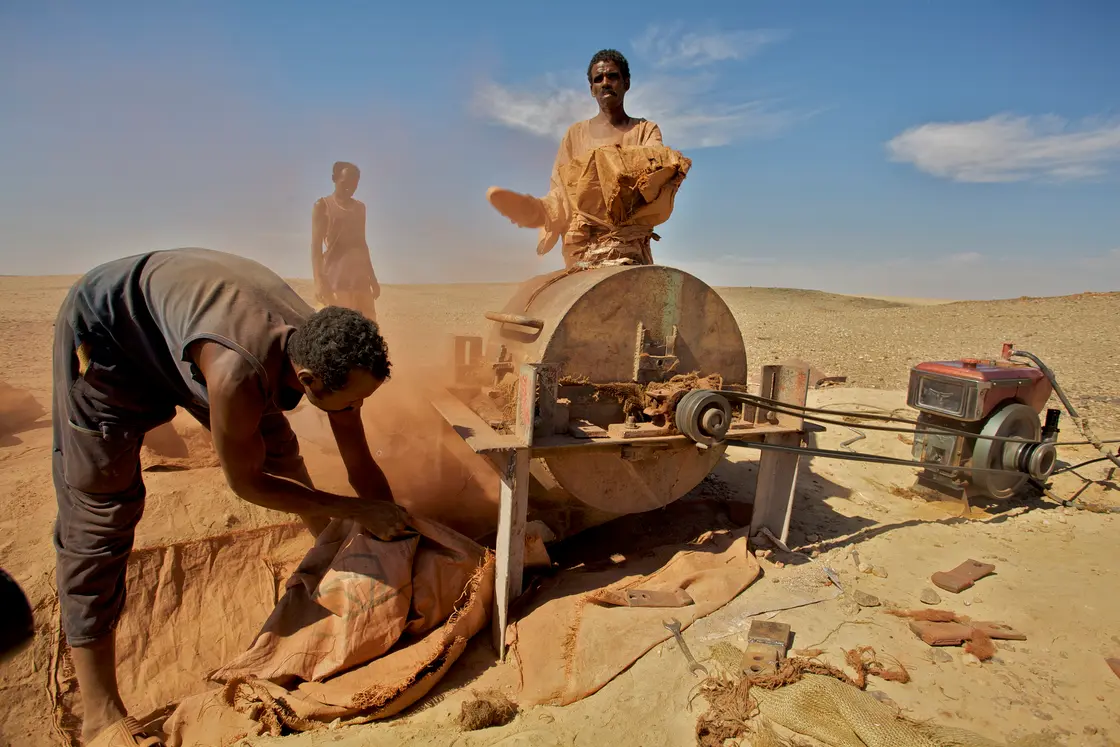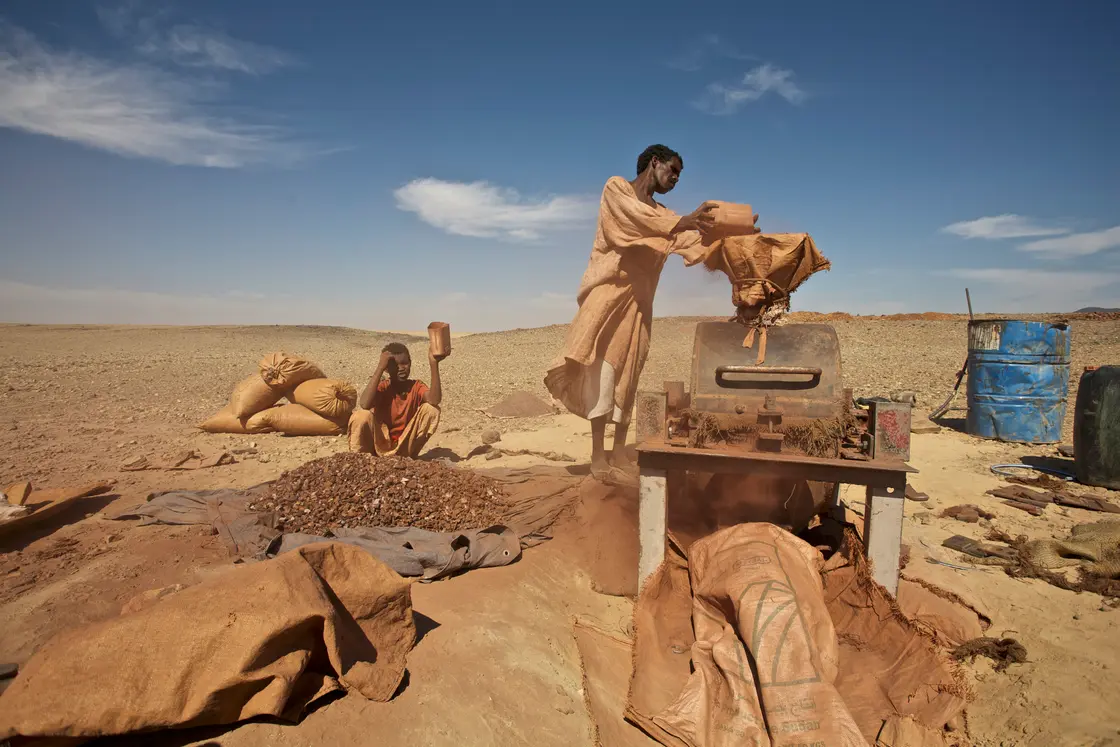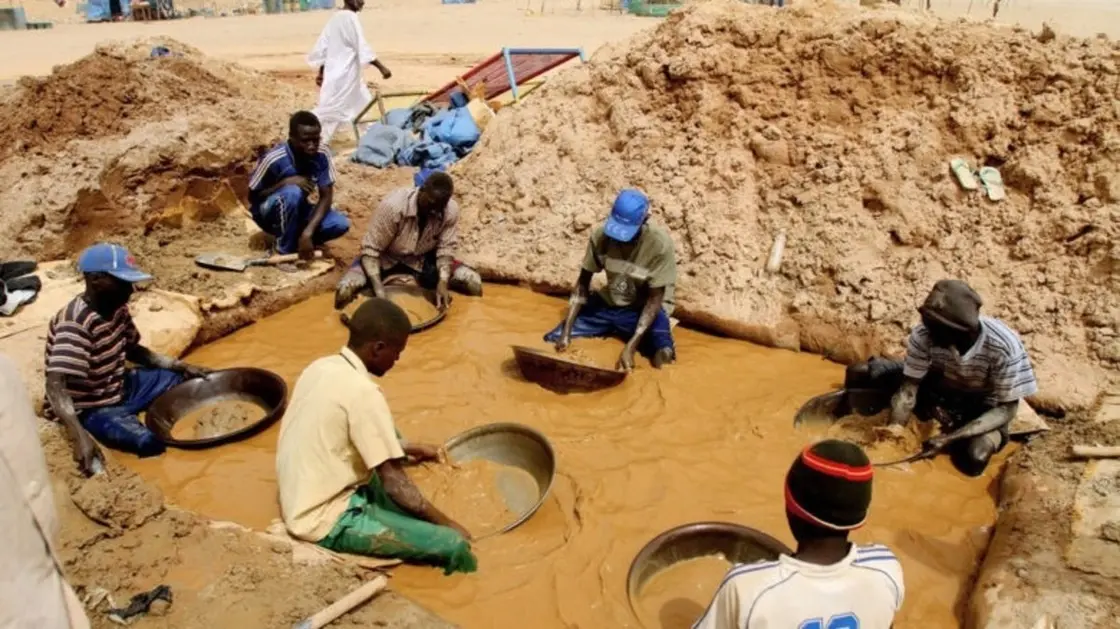Annual Production:
The net production of gold is 53 tons per year, and an agreement was reached with the Russian Miro Gold Company to explore for gold in some areas of its extraction.
Sudan’s gold exports rose in the first half of this year to one billion and 315 million dollars, compared to about one billion and 14 million dollars in the first half of last year, an increase of 300 million and 900 thousand dollars, according to the Sudanese News Agency.
According to data from the Central Bank of Sudan, the country exported 21.8 tons of gold in the first half of the year, compared to 16.7 tons in the same period last year. Data indicate that all gold was exported to the UAE.
Gold
Gold
The largest gold-producing countries in Africa — as a hedge against inflation and a safe haven from economic and political tensions — have strengthened the continent’s position within the map of the yellow metal globally, in light of the recovery of the industry with the recovery from the repercussions of the Corona pandemic and the rise in prices at that time in 2020.
The continent’s production represented a quarter of the total production during the past year (2022), and contributed about 680 tons of the total 3,000 tons produced globally.
Among the most important gold producing countries in Africa during the year 2022 AD:
- Ghana (117.6) tons
- South Africa (100) tons
- Sudan (93) tons
- Mali (63.4) tons
- Burkina Faso (45) tons
The ancient Egyptian extracted gold from places where it was found, especially in the Egyptian Eastern Desert, since ancient times. The Pharaohs explored the Eastern Desert thousands of years ago. They took rugged roads and braved mountain rocks. They searched and prospected for gold and achieved great success. They discovered dozens of sites containing gold ores. They were able to identify the veins of quartz that carried this metal and extracted it from them. They used to decorate their temples and statues with it and perhaps take it as jewelry for their wives. And their loved ones.
Evidence of this is the map that was recently found in the Trino Museum in Italy, which is made of papyrus and marked with 125 gold sites, most of them in the Eastern Desert and southern Egypt and the Al-Alaqi region, which also belongs to the Eastern Desert range in Aswan Governorate, and among the most important sites identified by this map in the desert range. The eastern area, which was exploited by the Pharaohs, is the Jabal al-Sukari mine, which contains about 20 million ounces of gold, of which 13 million ounces are confirmed and 7 million are under confirmation, and an area called Sakib and the Al-Fawakhir area, 70 km from the Qusayr-Qift road.
Gold mining is divided into two types as follows:
Regulated mining for exploration and prospecting:
Regulated mining for exploration and prospecting projects through concessions (large and medium). It is official and safe mining and is carried out using cyanide and carried out scientifically and under the supervision and control of governments.
Unregulated domestic mining
Private mining is considered a source of quick profit, and attracts a large number of people who suffer from difficult living conditions in third world countries. It is an essential resource for the state treasury, and it is only safe if the mining cycle is completed in accordance with the standard requirements recommended internationally by eliminating the final waste after mining, extraction operations, and reburial. The final return of waste to official landfills and by documented means, and to be under the supervision and care of the government through the relevant authorities.
The dangers of unregulated domestic mining, in which gold is extracted using mercury. Chemical pollution — resulting from the extraction of gold by domestic mining — poses health risks to mining communities and residents near places where mining operations are active. According to the World Health Organization, exposure to mercury poses a danger. on me:
- It leads to damage to the nervous, digestive and immune systems in humans.
It leads to many cases of newborn deformities and miscarriages in women after the spread of mining activity.
Gold metal is spread in most of the cities of northern desert Sudan, and it is considered a historical mine, specifically from the far north until near the capital, Khartoum, and from the eastern coast on the Red Sea and the Red Sea mountain range to the far west near Mount Uwaynat and Al-Tineh in Darfur. The diversity of Sudan’s topography, including desert lands, hill ranges, and volcanic mountains, has led to the diversity of its minerals, especially gold, which is found in high proportions in northern Sudan, from Wadi Halfa to Atbara, resulting from the transformation of volcanic and sedimentary rocks dating back to the late Protozoan era in the form of veins with other metals such as copper and zinc. And iron.
In the Red Sea mountains, gold is found in high concentrations, reaching 100 grams/ton in some places. It is also found along with silver in the southern Blue Nile (Blue Nile State), where there is sedimentary gold, which is mined using traditional methods.




